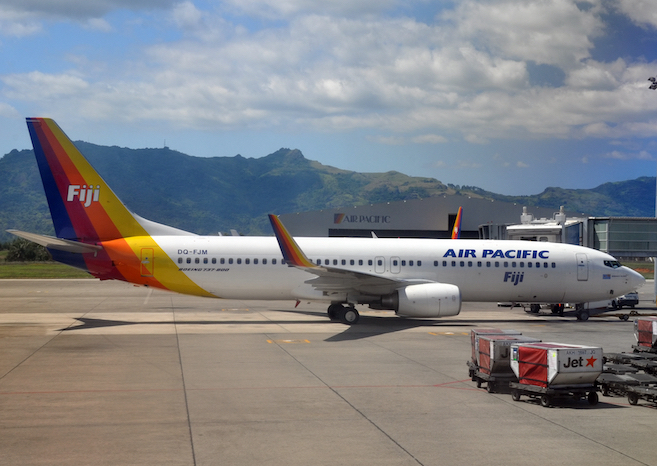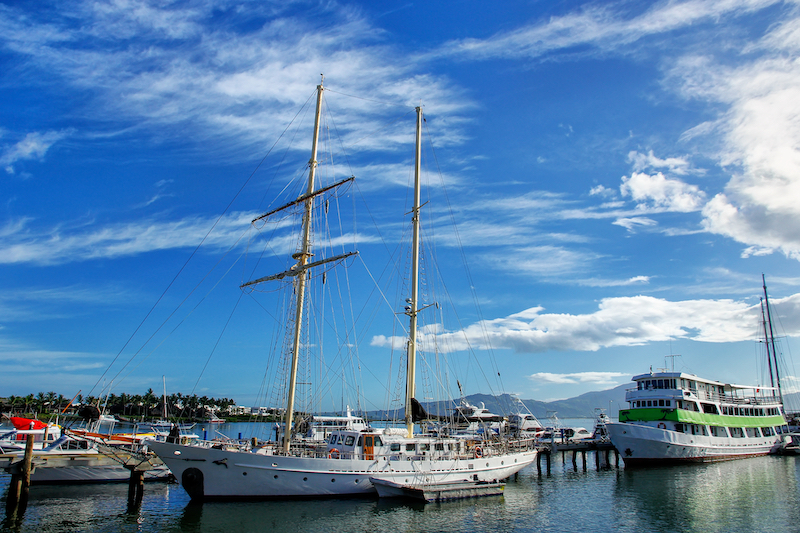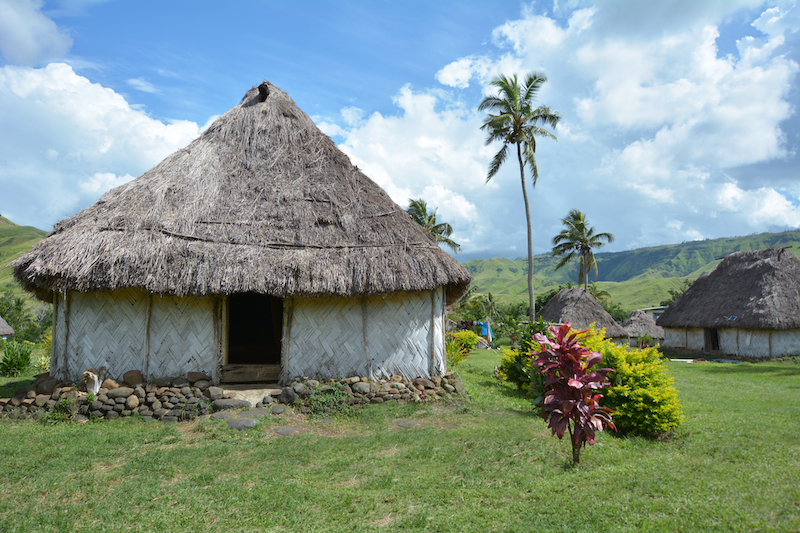Although you might not know the name ‘Viti Levu’, chances are you’ve heard of its international airport, Nadi (pronounced Nan-di), or capital, Suva. The two cities are four hours apart by bus…but only 30 minutes by air.
The largest island in the country, it is also one of the biggest in the South Pacific, usurped only by Hawaii’s Big Island and New Caledonia. With 600,000 residents, the island lays claim to almost three-fourths of Fiji’s population.
Home to the country’s economic industries, the island is also the nation’s agricultural center. Its ‘salad bowl’ (Sigatoka Valley) is so named for the government-mandated variety of vegetables grown there. The goods are often shipped throughout Fiji’s 100 inhabited islands. The island offers both a wet and dry zone, thanks to the sloping mountains.
A majority of Viti Levu’s overnight tourist hotels are clustered around Denarau Island, outside of Nadi. Travelers staying two or more nights may also choose to venture an hour south to the Coral Coast.
Aerial view of the Viti Levu ‘salad bowl’ interior.
In addition to the main entry point for tourists, Nadi, Viti Levu is also home to Lautoka, a port town that is the launching point for many inter-country boats and ferries.
On the opposite of the island sits Suva, the capital of Fiji and home to the government, big business and cultural activities.
Location of Viti Levu
Viti Levu is located west of Tonga, south of Tuvalu, southwest of Samoa and east of Vanuatu. What, that didn’t help you? A better way of thinking about it: Fiji is a 10 hour flight west of Los Angeles…although make sure you ‘jump ahead’ one day when you’re planning your schedule due to time zone changes!
As our friend Rodney from Sunspots International says, “Think of it as two meals and two movies and you’re there!”
How to Travel to Viti Levu
An overwhelming majority – more than 90% – of visitors first arrive in Viti Levu at Nadi International Airport. Popular departure points are Sydney, Australia, Auckland, New Zealand and Los Angeles.
Traveling around Viti Levu is commonly done via hired car or a series of amazingly inexpensive buses that encircle the island along Kings Road to the north and Queens Road to the south. Buses stop at all of the major cities and villages.
As a main transportation hub and the largest island in Fiji, travel from Viti Levu to elsewhere in Fiji is simple and cheaper than you might expect.
Why Visit Viti Levu
Without a doubt, Viti Levu provides the widest range of activity options in Fiji.
All water sports – motorized or not – are available off of Viti Levu’s shores, as are land-based nature options like climbing the country’s highest peak, trekking through the ‘salad bowl’ or exploring old ruins.
Additionally, the island is home to the majority of the nation’s museums, performing arts theatres and cultural attractions, not to mention the small nightlife!
Being home to a majority of Fiji’s population has its disadvantages too – the streets can be crowded, it’s harder to meet locals and the sales pitches you receive are a little more challenging to turn down.
Although tourists can learn about the history of the Fijian people at various museums and events, viewing it first-hand in local villages and communities is slightly more difficult in business-driven Viti Levu than elsewhere in the country.






